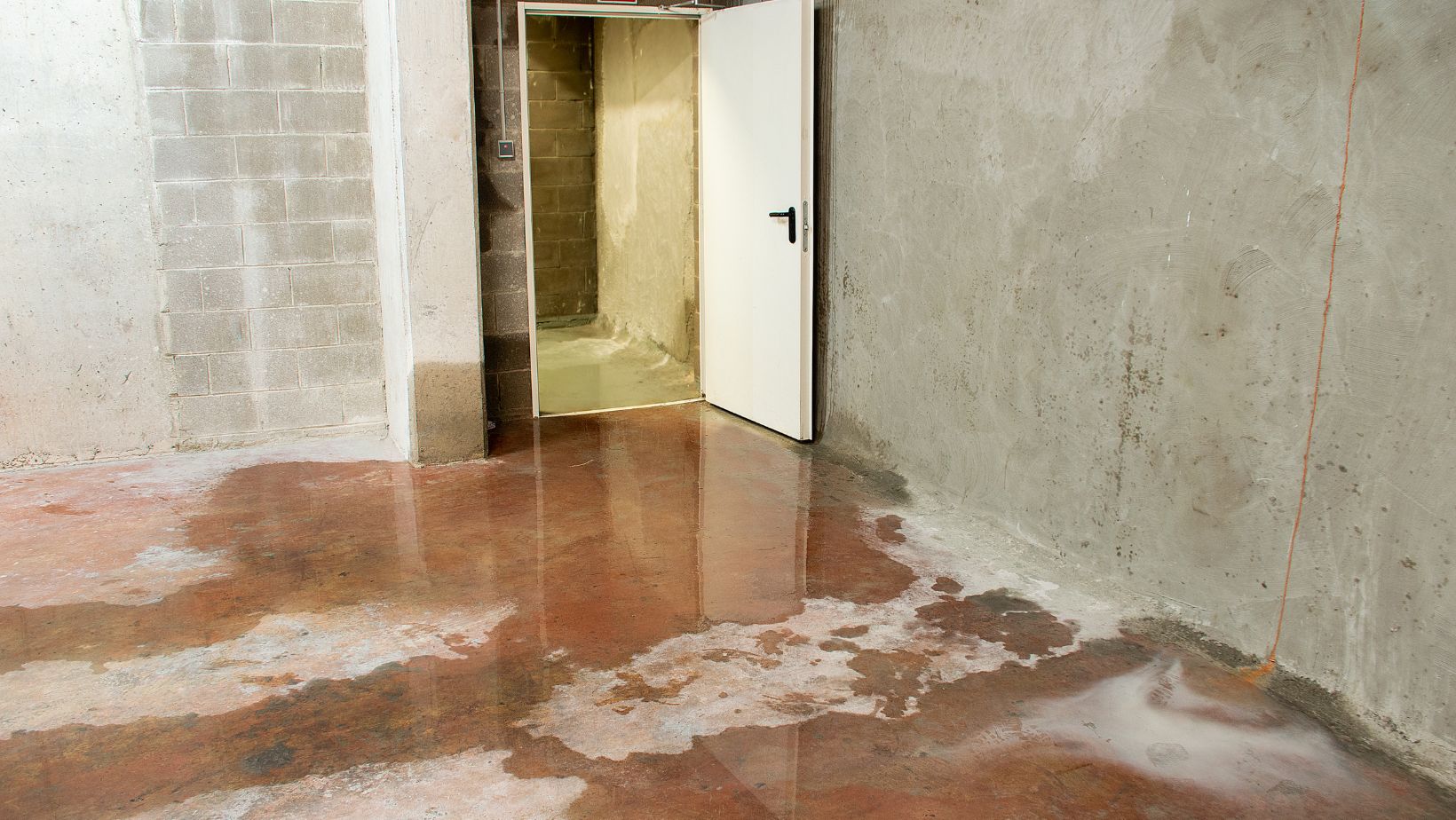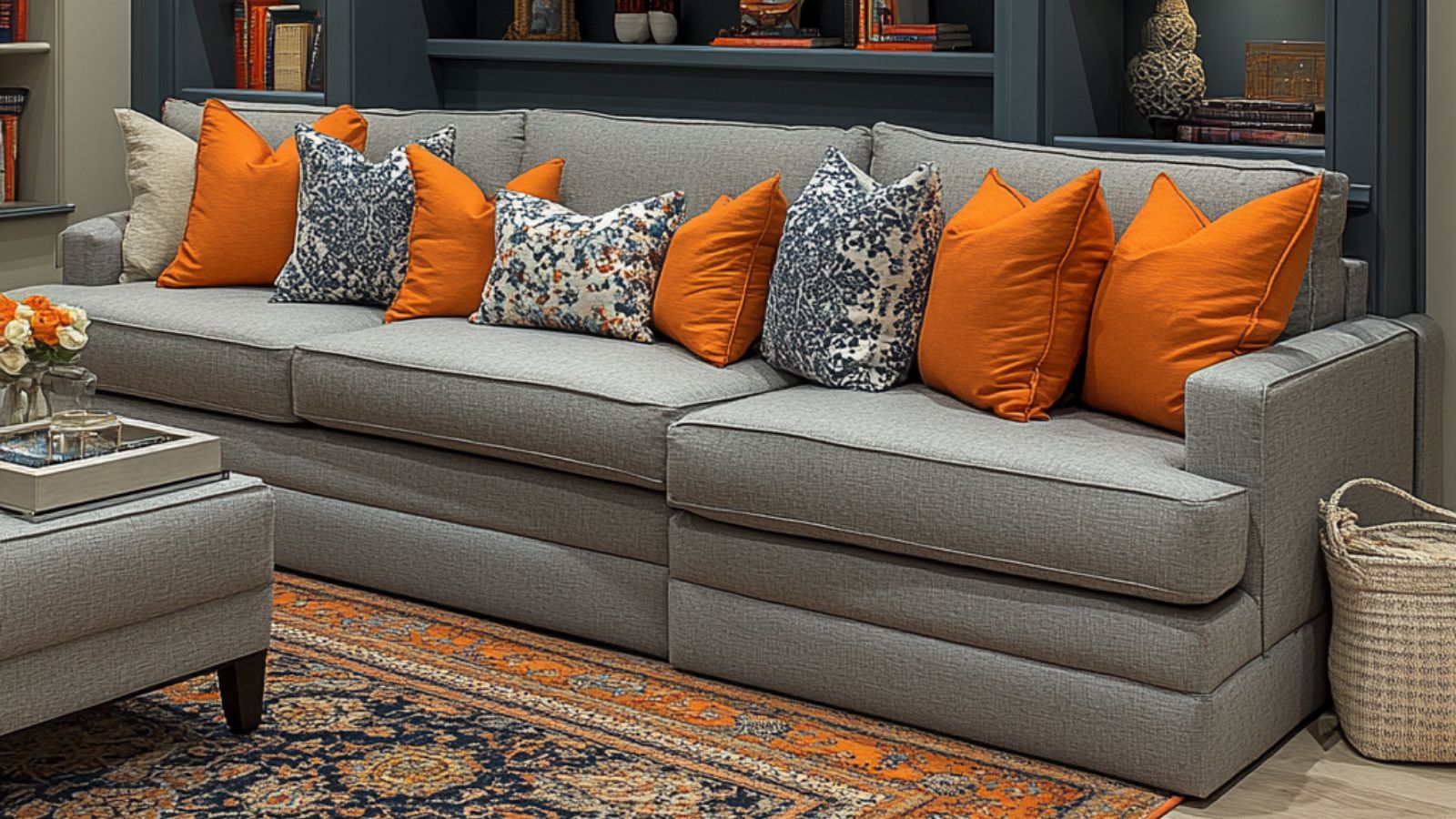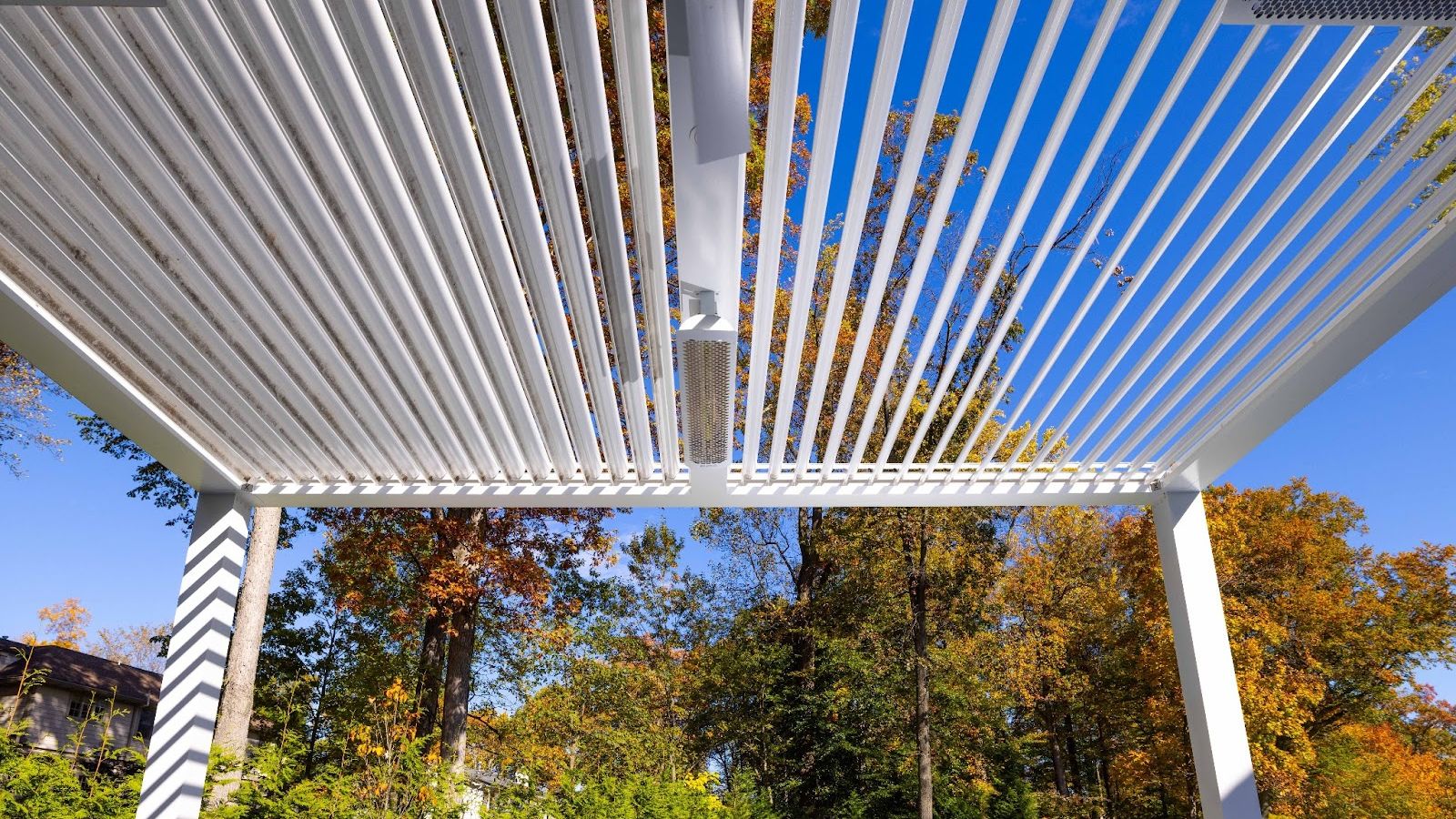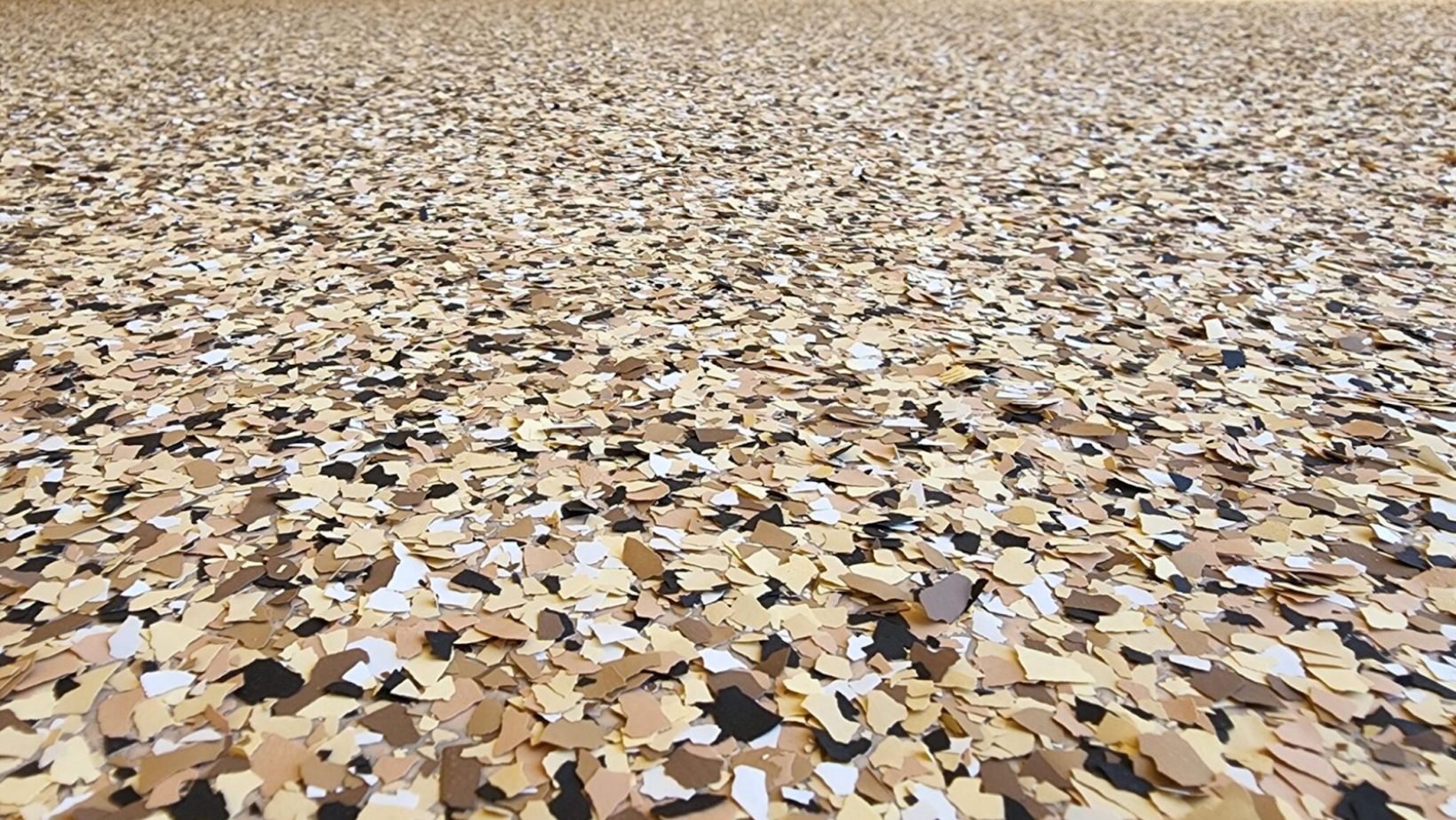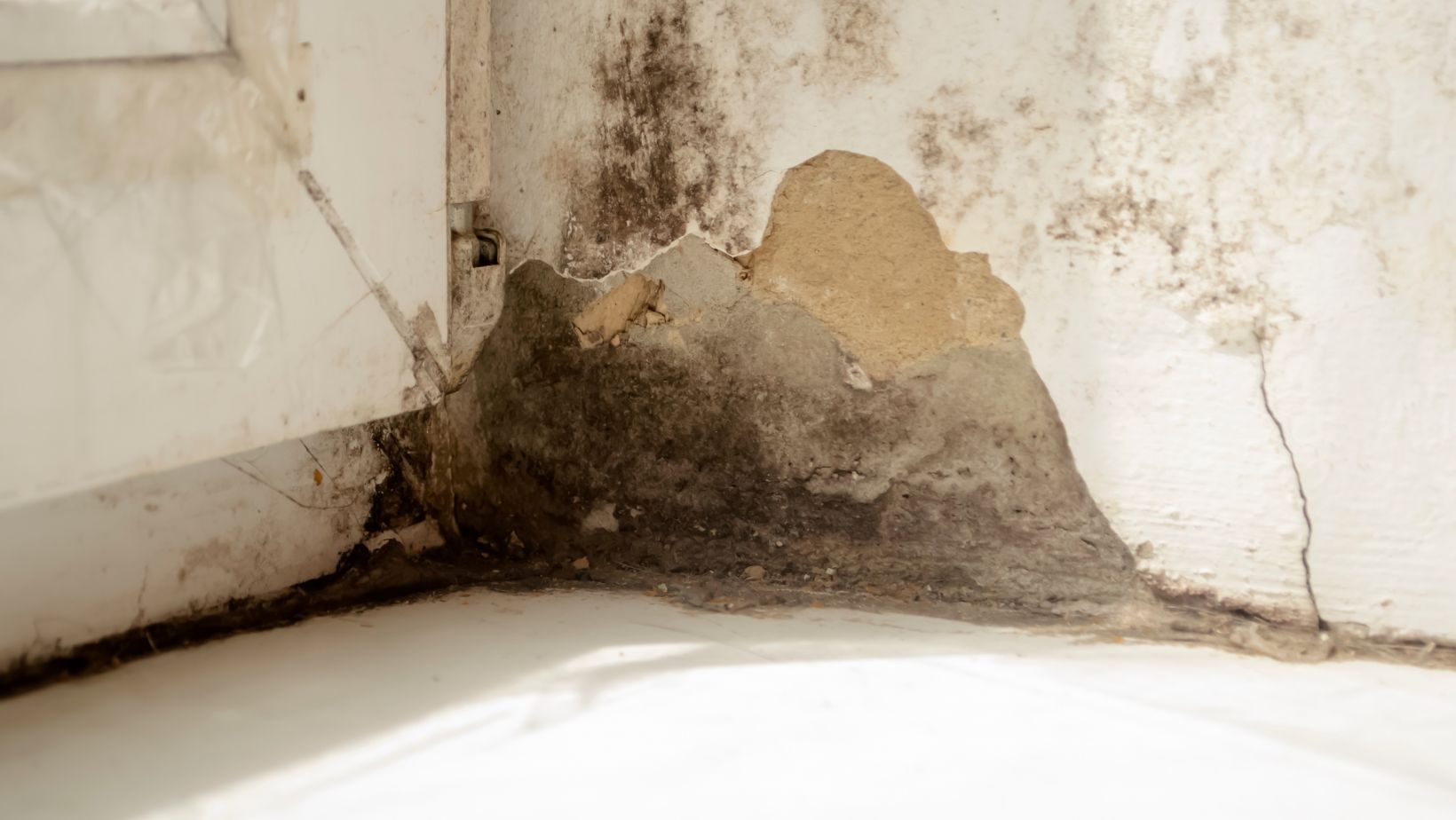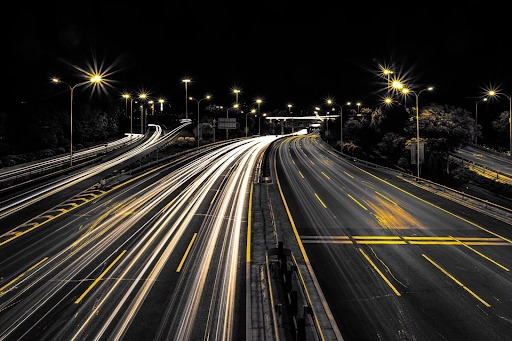You can fully transform your bedroom space without undergoing a full renovation process. Custom closet installations represent the perfect solution you’ve been searching for to improve your bedroom space. The organization of your bedroom space affects both your morning routine and your levels of stress. Professionally designed closet space maximizes every inch of your bedroom […]
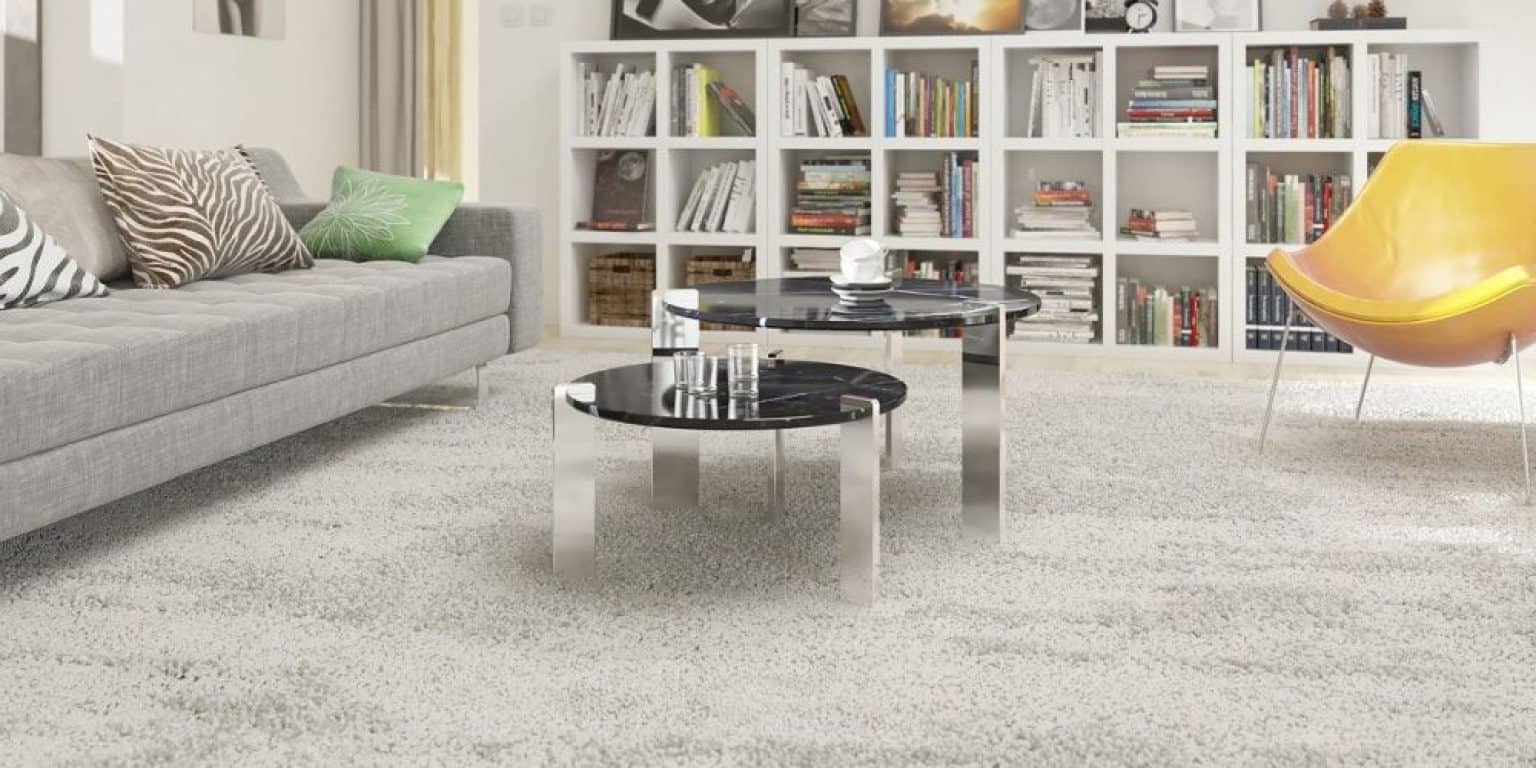
As Featured On
Feel like royalty, design for royalty
Hello And Welcome To My Interior Palace!
Welcome to My Interior Palace, a website dedicated to all things interior design, home decor, and home improvement!
We are passionate about creating beautiful and functional spaces that reflect your unique personality and style. Our team of experts is here to share their knowledge and experience to help you transform your home into your dream palace.
Whether you’re looking for inspiration, advice, or practical tips, you’ll find it all here on our website. Join us on this exciting journey of creating a beautiful and comfortable living space that you can call home!
Popular Interior Design Articles
Crafted by:

Are Glass Dining Tables Out of Style In 2023? (Answered!)
A dining table holds a special place in every home. It's a place of gathering for the whole family as well as friends. When it's stylish and nice-looking, it can also add a touch of grace to the entire space and elevate the whole dining experience. For long, glass dining tables have been considered the ...

The Ultimate Guide to Cabinets and Countertops in 2024
Let's face it, kitchens are the heart of the home. They're where we gather to cook, chat, and maybe even attempt that sourdough starter everyone's been raving about (jury's still out on mine). But what truly elevates a kitchen from "dinner central" to a dream space? The perfect cabinets and countertops, of course! ...
Popular Home Improvement Articles
Visions by:

R11 Vs R13 Insulation – What’s The Difference?
One of the main things you'll have to think about when building a new home or renovating an old one is insulation. No matter how nice your house looks or how cozy it feels, the life inside will be anything but comfortable without proper insulation. However, those who are encountering the home insulation ...

6 Advantages And 5 Disadvantages Of Skim Coat
"To skim coat or not to skim coat" is a significant concern for people planning a DIY house renovation project. Surface flaws like cracks, paint flaking, peeling drywall paper, etc., can ruin the entire look of your house's interior. And let's admit it: repairing options like plastering or replacing drywall ...

7 Obvious Signs To Replace Your Doors And Windows
When your doors and windows fail, it's not just about comfort – it could also affect your health. The whole point of having windows and doors is to protect your home from outside elements, and of course, intruders. But like everything else, they wear out over time. Seals break, weather-stripping gets damaged, and ...
Editor's Pick

MyInteriorPalace.com: Transform Your Home with Expert Design Tips & Virtual Consultations
Ready to transform your living space into a stunning sanctuary? MyInteriorPalace.com stands as your ultimate destination for all things home décor and interior design inspiration. This comprehensive platform brings together expert insights trendy design ideas and practical solutions for every room in your home. ...

Exploring Tattoo:_jdbkd8u2hk= Easy Mehndi Design: A Blend of Tradition and Innovation
Traditional Mehndi, an ancient art form, has been adorning hands and feet for centuries. But in recent years, it's taken a modern twist. Enter the world of traditional tattoo easy mehndi designs, where tradition meets innovation. This art form, steeped in history, is now a trendy choice for those seeking a unique ...

Lilo Y Stitch:auts0j4pa60= Dibujos Para Colorear: A Fun Way for Kids and Adults to Learn and Relax
Who can resist the charm of the mischievous yet adorable Stitch and his best friend, Lilo? Their adventures in the tropical paradise of Hawaii have captivated the hearts of millions. Now, they're ready to jump off the screen and onto your coloring pages. This is something every fan needs to know! Coloring ...

Spreading Positivity: The Impact of Segunda Feira:sezn8w4-qqy= Mensagem De Bom Dia
Starting off the week right can set the ultimate tone for the days to follow. That's why the tradition of segunda feira mensagem de bom dia, or "Monday good morning message" in Portuguese, is more than just a greeting. It's an ultimate experience and powerful tool to inspire, motivate, and spread positivity. ...
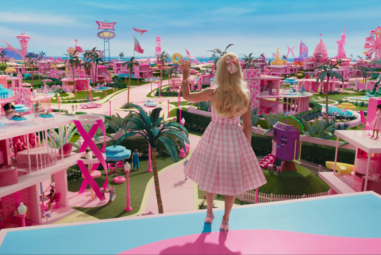
Rise of Wallpaper:sivrbj9d5vw= Barbie: Nostalgia Meets Modern Interior Design
In the realm of delightful and whimsical interior design, nothing quite captures the imagination like Barbie-themed wallpapers. They're not just for children's rooms anymore; they're making waves in various spaces, from chic living areas to trendy offices. This article dives into the captivating world of Barbie ...

Exploring Food:umwi8k-sf9e= Recipes: The Art, Innovation, and Importance of Fresh Ingredients
The art of crafting delicious meals isn't just a hobby; it's a spackle. Whether you're a seasoned home cook or a kitchen newbie, the world of food recipes offers an endless array of flavors to explore. From mouth-watering desserts to hearty main courses, there's a recipe for every palate and every occasion. ...

Maximizing the Impact: Harnessing the Power of Blue:e7xbpab9h8c= Background in Design
Ever wondered why a blue background can make a difference in your design, presentation, or even mood? It's more than just a color. This hue, often associated with tranquility and depth, carries profound implications in various fields, from psychology to design aesthetics, impacting the body. Delving into the ...
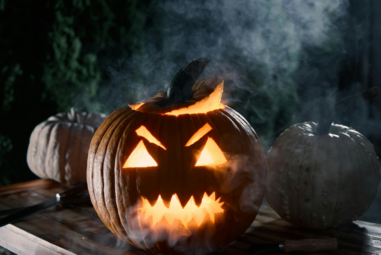
Exploring the Rise of Aesthetic:4bmibcmo6kc= Halloween Wallpaper
When the air turns crisp and leaves begin to fall, it's a sign that Halloween is on its way. This festive season brings a unique aesthetic that's both spooky and captivating. From haunted houses to grinning jack-o'-lanterns behind sheer curtains, the imagery of Halloween is unmistakable and can be a source of ...
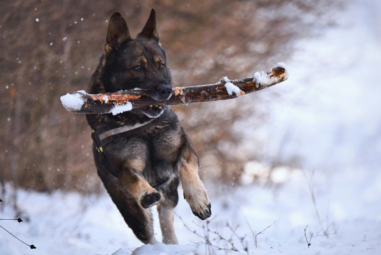
The Charm of German Shepherd:s_2klclu4nc= Dog: History, Traits, and Care Tips
The German Shepherd Dog, a breed known for its intelligence and versatility, often takes center stage on various fronts, from family homes to the nightstand of law enforcement. These dogs aren't just all business; they're also filled with boundless energy and a heart full of loyalty. Whether you're a dog lover ...

A Deep Dive into Ultra instinct:ajbegmqbd9e= Goku Divine Transformation
When it comes to the Dragon Ball universe, few characters have grown as powerful or as iconic as Goku. This Saiyan warrior's journey from a simple martial artist to a universe-saving hero is nothing short of epic. In his many epic face-offs, one of his most awe-inspiring transformations is the Ultra Instinct ...
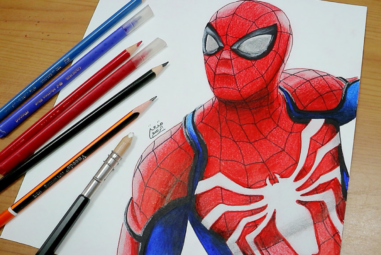
A Comprehensive Guide to Drawing Marvel’s Dibujo:6b7ejqhzrwu= Spiderman
Swinging from the skyscrapers of New York City, Spiderman has captured the hearts of comic book enthusiasts and moviegoers alike. His iconic red and blue suit, the web patterns, and the dramatic poses are not just thrilling but also an artist's delight, highlighting the significance of his visual appeal. This ...

The Impact and Evolution of the Iconic Logo:9qfn8jeqiza= Nike
In this article, we'll dive into the fascinating history of the Nike logo, exploring its origins and evolution. Just as one might admire a super car for its design and performance, we'll trace the logo's journey from its conception in 1971 to its current status. It's a tale of creativity, controversy, and ...
Latest Interior Design And Home Improvement Articles
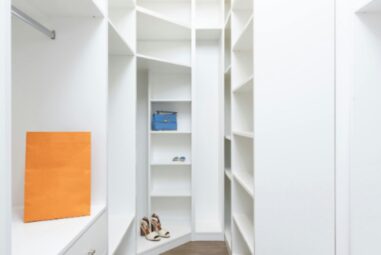
Transform Your Bedroom with Professional Closet Installation
You can fully transform your bedroom space without undergoing a full renovation process. Custom closet installations represent the perfect solution you've been searching for to improve your bedroom space. The organization of your bedroom space affects both your morning routine and your levels of stress. ...
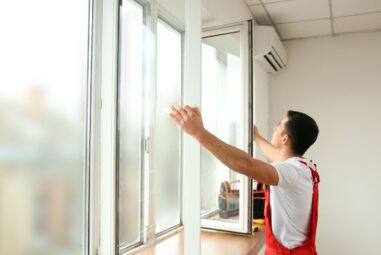
What You Can Expect from a Professional Window Repair Visit
One of the most critical elements of any residential or commercial structure is windows. They bring in natural light, improve ventilation, and make your property more energy-efficient. Over the years, though, even the most expensive windows can have problems—cracked glass, broken seals, and stuck frames. ...

A Step-by-Step Guide to Buying a Villa in Phuket as a Foreigner
For decades, Phuket has been synonymous with luxury, tranquility, and pristine landscapes. Beyond its turquoise waters and vibrant culture, the island boasts some of the most spectacular villas in Southeast Asia, making it a prime destination for real estate investment. Whether you're looking for a holiday ...

How to Keep Your Roof Intact for a Longer Period
The roof is the most integral part of your house, keeping you and your family away from bad weather conditions. In fact, if taken well cared of, it could add to its life and save some money on repairs, adding value to your home. Here are some effective ways to maintain and extend the life of your roof. Regular Roof ...

Design Inspiration from the World’s Most Luxurious Homes
When it comes to interior design, the world’s most luxurious homes set the standard for elegance, innovation, and comfort. From London penthouses to coastal villas in the Mediterranean, these properties are more than just places to live—they're showcases of extraordinary taste and craftsmanship. If you're looking to ...

10 Stylish Welcome Mats to Elevate Your Home’s First Impression
I 've always thought it's funny how we pour so much energy into our living rooms and kitchens while completely ignoring the entryway. Yet that's literally the first thing anyone sees when they visit! Your welcome mat isn't just some utilitarian doorstep accessory—it's your home's handshake, setting expectations ...

Designing in Inches: How New Yorkers Make 400 Square Feet Feel Like a Palace
Living in New York often means settling into compact apartments. Yet, somehow, these tiny homes still feel stylish, personal, and efficient. Want to know how New Yorkers make 400 square feet feel like a palace? It’s not magic—it’s smart choices, one inch at a time. People in the city treat design as a strategy, not ...

10 Qualities To Look For In A Reliable Plumber
When you need a Gainesville FL plumber, you want someone who is skilled, honest, and reliable. However, with so many options to choose from, how do you know which plumber to hire? There are several essential qualities that set reliable plumbers apart from the rest. Some of these include: Professional ...

How to Choose the Luxury Comforter Set for Every Season
Choosing the best luxury comforter set for every season involves more than just aesthetics— It is about achieving an ideal sleep experience. The best choice improves comfort, manages sleep environment temperature, and ensures the bedroom becomes a true sanctuary. With so many options available, selecting the best one ...

Clever Storage Solutions to Maximise Space in Your Student Bedroom
Moving into student accommodation can be an exciting experience, but one common challenge is making the most of a limited space. With efficient organisation, keeping your room tidy and functional is easily achievable with some creative thinking. Fortunately, there are plenty of innovative storage solutions that help ...

How Can White Shaker Cabinets Elevate the Look of Your Kitchen: Transform Your Space with Timeless Elegance
White Shaker cabinets have become a staple in modern kitchen design for their clean lines and timeless appeal. They bring an elegant simplicity that complements both traditional and contemporary styles. By incorporating White Shaker cabinets, you can effortlessly elevate the look of your kitchen, offering a ...
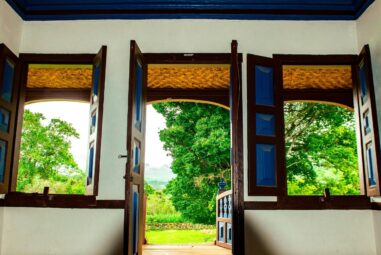
Older Homes and Modern Comforts
Older homes are treasures wrapped in history, yet living in them comes with challenges. They speak of a past era, offering character and uniqueness that new builds can't replicate. But do they have room for 21st-century comforts? Absolutely! Embracing Technology with Tact Integrating technology doesn't ...

Thinking of a Quick Kitchen Upgrade?
If you've ever walked into your kitchen and felt like it needed a little sprucing up, you're definitely not alone. I've had my fair share of kitchen envy while scrolling through social media feeds or flipping through home design magazines. The good news is that upgrading your kitchen doesn't always mean a ...

The Psychology of Colour: Choosing the Perfect Paint Shades for Every Room
Transforming a house into a personalized sanctuary requires thoughtful colour selection that resonates with both the architecture and the inhabitants' emotional needs. When homeowners partner with experienced residential house painters for their projects, they gain access to valuable insights about how ...

Home Styling Tips: Incorporating Candles into Your Interior
Candles aren’t just for power outages or holiday dinners anymore. They’ve become a staple in modern home design—for good reason. These small additions bring more than just flickering light. They offer ambiance, scent, and texture. And guess what? They don’t have to cost a fortune, either. Thanks to wholesale ...

The Charm of German Shepherd:s_2klclu4nc= Dog: History, Traits, and Care Tips
The German Shepherd Dog, a breed known for its intelligence and versatility, often takes center stage on various fronts, from family homes to the nightstand of law enforcement. These dogs aren't just all business; they're also filled with boundless energy and a heart full of loyalty. Whether you're a dog lover ...
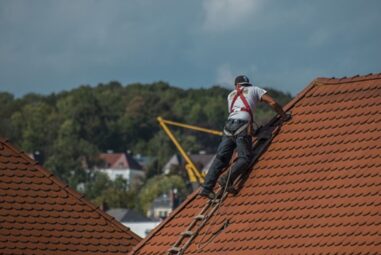
How to Create a Roof Maintenance Plan That Prevents Expensive Repairs
A roof is integral to preserving a property’s integrity, safeguarding it from harsh outdoor elements, and ensuring the safety and comfortability of those living in the home. Regardless of how well the structure is constructed or the quality of materials, the roof will need consistent care and upkeep due to the abuse ...

6 Ways to Add Industrial Chic Style to Your Home
Industrial chic has emerged as one of the most compelling and enduring trends in modern home design. Characterized by its raw, almost unfinished aesthetics, it fuses gritty urban looks with minimalist sophistication to create interiors that are as stylish as they are functional. Taking inspiration from converted ...
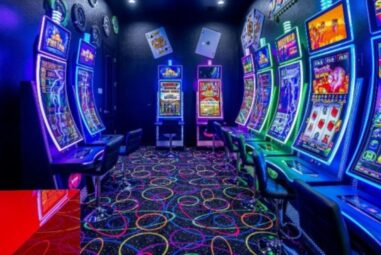
5 Luxuxy Homes With Amazing Game Rooms
Interested in deluxe living spaces? Here, we showcase five luxury homes that don't just promise comfort and style. They also feature game rooms set to dazzle you - consider them private playgrounds with everything from billiards to table tennis and vintage arcades. These properties redefine luxury, offering a ...

How to Inspect Your Home for Leaks Before the Rainy Season
Houses tend to leak and take on water during the rainy season. Being aware of the potential weak spots beforehand, before the rain starts pouring down, can save you a lot of time, money, and headache. A thorough inspection of your home can reveal those small problems that need fixing before they become big ones. This ...

10 Perfect Hardscaping Ideas You’ll Love That Boost Your Property Value
Hardscaping, like walkways, retaining walls, patios, and other exterior surfaces and structures, can significantly increase your yard's usability while delivering impressive returns on investment.According to landscape designers Clark Outdoor Designs, property values typically increase by 25-50% when you add ...

How To Turn Your Home Into A Stress-Free Zone Without Spending A Fortune
In a world where life moves fast and stress is everywhere—from work deadlines to social media overload—your home should be the one place that helps you breathe easier. Creating a stress-free environment at home isn’t about expensive renovations or hiring a designer. With a few intentional tweaks, smart habits, ...

How Interior Design Can Help You Sell Your Home Faster and for More
Thinking about selling your home? You’re not alone.But here’s the thing—selling fast and getting high dollars isn’t just about timing the market. It’s also about what your home looks and feels like inside.Yep, we’re talking interior design.The good news? You don’t need a full HGTV makeover. A few smart design tweaks ...

Clear Clutter, Find Calm: How to Clean and Create a ZenSanctuary
Home is where the heart is. However, if your home is feeling more chaotic than calming at the moment, you’re not alone. Research conducted by home storage experts, Hammonds,reveals that over a quarter of people struggle to find peace in their own space. The problem isn’t just clutter - it’s the way your home ...
- 1
- 2
- 3
- …
- 44
- Next Page »
What You Can Expect from a Professional Window Repair Visit
One of the most critical elements of any residential or commercial structure is windows. They bring in natural light, improve ventilation, and make your property more energy-efficient. Over the years, though, even the most expensive windows can have problems—cracked glass, broken seals, and stuck frames. Understanding what to expect from a professional Window Repair Services […]
A Step-by-Step Guide to Buying a Villa in Phuket as a Foreigner
For decades, Phuket has been synonymous with luxury, tranquility, and pristine landscapes. Beyond its turquoise waters and vibrant culture, the island boasts some of the most spectacular villas in Southeast Asia, making it a prime destination for real estate investment. Whether you’re looking for a holiday retreat, a profitable rental property, or a long-term residence, […]
Design Inspiration from the World’s Most Luxurious Homes
When it comes to interior design, the world’s most luxurious homes set the standard for elegance, innovation, and comfort. From London penthouses to coastal villas in the Mediterranean, these properties are more than just places to live—they’re showcases of extraordinary taste and craftsmanship. If you’re looking to elevate your own living space or just love […]
10 Stylish Welcome Mats to Elevate Your Home’s First Impression
I ‘ve always thought it’s funny how we pour so much energy into our living rooms and kitchens while completely ignoring the entryway. Yet that’s literally the first thing anyone sees when they visit! Your welcome mat isn’t just some utilitarian doorstep accessory—it’s your home’s handshake, setting expectations before guests even cross the threshold. After […]
Designing in Inches: How New Yorkers Make 400 Square Feet Feel Like a Palace
Living in New York often means settling into compact apartments. Yet, somehow, these tiny homes still feel stylish, personal, and efficient. Want to know how New Yorkers make 400 square feet feel like a palace? It’s not magic—it’s smart choices, one inch at a time. People in the city treat design as a strategy, not […]
How to Choose the Luxury Comforter Set for Every Season
Choosing the best luxury comforter set for every season involves more than just aesthetics— It is about achieving an ideal sleep experience. The best choice improves comfort, manages sleep environment temperature, and ensures the bedroom becomes a true sanctuary. With so many options available, selecting the best one requires knowing what luxury bedding is. Everything […]
How Can White Shaker Cabinets Elevate the Look of Your Kitchen: Transform Your Space with Timeless Elegance
White Shaker cabinets have become a staple in modern kitchen design for their clean lines and timeless appeal. They bring an elegant simplicity that complements both traditional and contemporary styles. By incorporating White Shaker cabinets, you can effortlessly elevate the look of your kitchen, offering a fresh, bright, and inviting atmosphere. Whether you’re planning a […]
Older Homes and Modern Comforts
Older homes are treasures wrapped in history, yet living in them comes with challenges. They speak of a past era, offering character and uniqueness that new builds can’t replicate. But do they have room for 21st-century comforts? Absolutely! Embracing Technology with Tact Integrating technology doesn’t mean disrupting the soul of a heritage home. Smart thermostats […]
Thinking of a Quick Kitchen Upgrade?
If you’ve ever walked into your kitchen and felt like it needed a little sprucing up, you’re definitely not alone. I’ve had my fair share of kitchen envy while scrolling through social media feeds or flipping through home design magazines. The good news is that upgrading your kitchen doesn’t always mean a full-blown renovation or […]
Home Styling Tips: Incorporating Candles into Your Interior
Candles aren’t just for power outages or holiday dinners anymore. They’ve become a staple in modern home design—for good reason. These small additions bring more than just flickering light. They offer ambiance, scent, and texture. And guess what? They don’t have to cost a fortune, either. Thanks to wholesale candles, you can style your home […]
6 Ways to Add Industrial Chic Style to Your Home
Industrial chic has emerged as one of the most compelling and enduring trends in modern home design. Characterized by its raw, almost unfinished aesthetics, it fuses gritty urban looks with minimalist sophistication to create interiors that are as stylish as they are functional. Taking inspiration from converted warehouses, factories, and loft spaces, the modern industrial […]
10 Perfect Hardscaping Ideas You’ll Love That Boost Your Property Value
Hardscaping, like walkways, retaining walls, patios, and other exterior surfaces and structures, can significantly increase your yard’s usability while delivering impressive returns on investment. According to landscape designers Clark Outdoor Designs, property values typically increase by 25-50% when you add hardscaping features and unlike traditional landscaping that requires constant maintenance, hardscape elements require minimal upkeep. […]
How To Turn Your Home Into A Stress-Free Zone Without Spending A Fortune
In a world where life moves fast and stress is everywhere—from work deadlines to social media overload—your home should be the one place that helps you breathe easier. Creating a stress-free environment at home isn’t about expensive renovations or hiring a designer. With a few intentional tweaks, smart habits, and calming digital additions, you can […]
How Interior Design Can Help You Sell Your Home Faster and for More
Thinking about selling your home? You’re not alone. But here’s the thing—selling fast and getting high dollars isn’t just about timing the market. It’s also about what your home looks and feels like inside. Yep, we’re talking interior design. The good news? You don’t need a full HGTV makeover. A few smart design tweaks can […]
Clear Clutter, Find Calm: How to Clean and Create a ZenSanctuary
Home is where the heart is. However, if your home is feeling more chaotic than calming at the moment, you’re not alone. Research conducted by home storage experts, Hammonds,reveals that over a quarter of people struggle to find peace in their own space. The problem isn’t just clutter – it’s the way your home works […]
What to Look for When Hiring a Contractor in Santa Cruz, CA
Whether you’re planning a home renovation, building an ADU, or starting from the ground up with a new custom home, choosing the right contractor is one of the most important decisions you’ll make. In Santa Cruz—a region known for its mix of coastal homes, historic architecture, and hillside properties—having a trusted construction partner can make […]
Adjustable Standing Desks vs. Fixed Desks: Which One Suits You?
Sitting all day at a desk can lead to back pain, poor posture, and reduced energy levels. That’s why more people are switching to standing desks; they help improve posture, increase movement, and even boost focus. But with so many options available, choosing the right one can feel overwhelming. Should you go for a fixed-height […]
What’s the Age for Kids to Sleep in Bunk Beds? Expert Insights on Safety and Comfort
When it comes to bunk beds, parents often wonder about the right time for their children to sleep in one. Experts recommend children be at least six years old before using the top bunk, due to safety concerns. This recommendation is based on a child’s ability to use a ladder safely and have the maturity […]
Are Designer Candles Really Worth It? A Side-by-Side Overview
The idea of spending upwards of $80 on a candle can seem excessive at first glance. After all, it’s wax, a wick, and a vessel — a product designed to be burned. The question naturally arises: what justifies the price? This is especially relevant when widely available alternatives exist at a fraction of the cost. […]
Whole-Home Repiping: What It Really Means – And When You Shouldn’t Wait
It’s easy to take the plumbing in your home for granted – until something goes wrong. A slow drip here, a burst pipe there, rusty water in the morning… what may seem like minor issues can actually be early signs that your home’s pipes are nearing the end of their life. When patchwork repairs stop […]
How to Choose the Right Plumbing Fixtures for Your Home
If you want to improve your home’s plumbing fixtures but need guidance on where to begin? The selection of plumbing fixtures requires more than just visual appeal. Selecting products involves discovering the ideal combination of various important factors. Style and design Functionality and durability Water efficiency Value for money The plumbing fixtures you select will shape your […]
How to Start a Restaurant Business and Design It for Success
Starting a restaurant is a dream shared by many. It’s a chance to serve your favorite dishes, create memorable experiences, and build a brand that reflects your vision and passion. But while food and service are central to a restaurant’s success, interior design plays a powerful role in attracting customers and keeping them coming back. […]
Why Ductless Air Conditioners Are Perfect For Small Homes And Apartments
More homeowners are exploring creative cooling ideas for compact living spaces. A ductless air conditioner may be the right choice if you live in a small house, apartment, or condo. These units offer a practical alternative to traditional cooling methods and require minimal modifications. This article discusses how ductless systems operate and their benefits over […]
How Does Mould Form And What Can You Do About It?
Ever noticed those black spots in your shower? That’s mould, which is like an unwelcome houseguest that moves in without asking. Mould spores are everywhere, floating around your home right now, waiting for the moment to settle down and multiply. They’re not picky roommates either. Give them a bit of moisture, some warmth, and literally […]
Backyard Transformation: 10 Useful Ideas for a Successful Celebration Party
The weather outside is amazing and you’re planning on hosting a summer party for all of your friends and family. There is only one thing you’ll really need to make the party shine, and that’s some stunning outdoor party decor. It is important that you take a look at some ideas for outdoor party decor […]
How Antique Wooden Pieces Can Elevate a Modern Interior
Alt: An antique wooden chair in a modern home. Modern interiors often feel clean and minimal. They use smooth surfaces, neutral colors, and simple shapes. While this can look sleek, it sometimes feels a bit plain. Adding contrast helps fix that. One way to do this is by bringing in older wooden furniture. These pieces […]
The Devil’s in the Details: 3 Types of Bathroom Accessories to Refresh Your Space
How often do you stop to take a closer look at your bathroom’s existing décor? How much attention do you actually pay to the smaller details that make up the bigger picture in that compact space? Chances are, you probably don’t give this a second thought. Most people go in and out of their bathrooms […]
The Mistakes Homeowners Make When Hiring an Interior Designer
Decorating or revamping living spaces can be thrilling and overwhelming. However, working alongside an interior designer can turn this endeavor into a smooth and delightful experience. It’s quite common for homeowners to make mistakes when hiring experts in the field for projects, resulting in discontentment and avoidable costs. Being aware of these pitfalls could help […]
The Hidden Dangers of Untreated Water Damage
Water damage is one of the most destructive issues a property can face. Whether it’s from a leaky roof, burst pipes, or flooding, untreated water damage can lead to serious structural and health concerns. Many homeowners underestimate the risks, but failing to address water damage in Toronto promptly can result in expensive repairs, health hazards, […]
From Storage to Luxury: How Underpinning Creates High-End Basement Spaces
When envisioning your dream home, the untapped potential beneath your feet often goes overlooked. Strategic basement underpinning services can transform those forgotten lower levels into statement spaces that redefine your entire home experience. The process of basement underpinning and height extension might sound purely structural, but it represents one of the most dramatic interior design opportunities available […]
The Psychology of Colour: Choosing the Perfect Paint Shades for Every Room
Transforming a house into a personalized sanctuary requires thoughtful colour selection that resonates with both the architecture and the inhabitants’ emotional needs. When homeowners partner with experienced residential house painters for their projects, they gain access to valuable insights about how different hues affect mood and perception. These certified house painters bring not only technical expertise but […]
How to Design a Student-Friendly Study Space at Home
In today’s world of remote learning and hybrid education, having a dedicated study space at home is more important than ever. A well-organized and comfortable study area can significantly boost a student’s productivity, focus, and overall academic performance. However, designing an effective study space involves more than simply placing a desk and chair in a […]
How to Style your Living Room Like a Professional
It can be hard to figure out how to decorate your living room, which is probably one of the most used rooms in your house. That’s true whether you are starting from scratch, just creating a little, or making plans for a big project. However, the work is worthwhile, as you’ll end up with a […]
Santa Cruz Homeowners Face Rising Renovation Costs: What’s Driving the Increase?
Santa Cruz homeowners looking to renovate in 2025 are facing higher-than-expected construction costs, with local contractors reporting increased prices across materials, labor, and permitting fees. As demand for home improvements continues to grow, residents are navigating a rapidly shifting market that has made remodeling projects more expensive—and in some cases, more complex to complete. With […]
Crypto Casino.io: A Deep Dive into a Modern Crypto Gambling Platform
In the bustling world of online crypto casinos, Crypto Casino.io emerges as a platform aiming to bridge the gap between traditional casino experiences and the innovative world of blockchain technology. With a focus on user-friendliness, a wide array of games, and the inherent benefits of cryptocurrency, Crypto Casino.io seeks to carve out its niche in […]
The Essential Guide to Choosing Home Appliances That Fit Your Needs
Selecting the right home appliances is a decision that goes beyond aesthetics. Whether you’re outfitting a new home or replacing long-time staples, choosing appliances that suit your needs, budget, and lifestyle is critical. Modern appliances offer a mix of innovative technology, energy efficiency, and sleek design, which can make the buying process both exhilarating and […]
TG HK416 Gel Blaster: Realism Meets Tactical Precision
As someone who’s spent countless weekends engaged in gel blaster battles, I’ve handled my fair share of gear. If you’re like me and appreciate authenticity and performance, then you’re going to love the realistic gel blaster I’ve recently been using—the TG HK416 Gel Ball Blaster. Let me walk you through why this tactical rifle stands out […]
A Dry Basement, A Healthy Home: The Link Between Waterproofing And Indoor Air Quality
Creating a truly gorgeous interior space extends far beyond selecting the perfect paint colors and arranging stylish furniture. The foundation of beautiful living begins quite literally with your foundation. Interior basement waterproofing reliable solutions can transform your lower level from a damp, musty liability into valuable square footage that enhances both your home’s aesthetic appeal […]
Dubai’s Most Sought-After Villa Communities: Where to Purchase in 2025
Dubai has solidified its position as a global leader in luxury real estate, with villa communities becoming increasingly desirable for investors, high-net-worth individuals, and expats seeking a high-quality lifestyle. The city’s villa market is thriving in 2025, driven by an exceptional level of luxury, family-focused living, and consistently high rental yields. If you’re planning to make […]
How to Choose the Right Townhouse in Dubai
Dubai stands out as one of the most sought-after destinations for property investment, offering a unique blend of luxury, innovation, and substantial returns. If you’re looking to invest in or rent a townhouse in this vibrant city, finding the right one can be challenging. From location to lifestyle preferences, a range of factors demand attention. […]
Trends in Bathtub Remodeling for 2025
As homeowners look for ways to enhance their bathrooms with both style and functionality, bathtub remodeling continues to be a major focus in home renovations. The trends for 2025 emphasize comfort, sustainability, and innovative technology, ensuring that bathtubs are both practical and aesthetically pleasing. Whether you’re planning to upgrade your bathtub for a more luxurious […]
From Timber to Treasure: The Journey of Custom Woodwork in Home Décor
Wood has long been a cornerstone of interior design, evolving from a simple necessity to a cherished art form. Throughout history, craftsmanship in woodwork has reflected cultural shifts, technological advancements, and artistic expression. Today, custom wooden furniture and designs and antique wooden pieces are not just functional objects but valuable treasures that carry stories of the […]
Interior Palace: Modern Interior Design Trends and 1win App Features
Modern Trends in Interior Design Interior design is a constantly evolving field that combines aesthetics, functionality, and technological advancements. In 2025, trends focus on creating comfortable, eco-friendly, and technologically advanced spaces. Minimalism with Elements of Luxury The minimalist style remains popular but is now enriched with new elements. It is no longer just about neutral […]
Future-Proofing Your Home: Designing Interiors with Smart Technology in Mind
As technology evolves at a rapid pace, designing a home that stays relevant for years to come has become a priority for homeowners. Future-proofing your home involves creating interior spaces that adapt to new advancements while maintaining functionality and aesthetic appeal. This article explores strategies to achieve this, with a focus on integrating cutting-edge solutions […]
5 Benefits of Choosing a Standing Seam Metal Roof for Your Home
Choosing the right roofing material is an important decision for any homeowner. A roof needs to be durable, efficient, and visually appealing while offering long-term value. A standing seam metal roof is an excellent option that provides all these benefits and more. This type of roofing is gaining popularity due to its modern design, exceptional […]
Feng Shui Fundamentals For Your Home: What It Is And How You Do It
Feng Shui, the ancient Chinese art of balancing energies within a space, is no longer a guarded secret of interior designers and spiritual gurus. Today, it’s an accessible roadmap for anyone looking to create an environment that reflects and elevates who they are. Whether you’re living in a minimalist city loft or a spacious suburban […]
The Heart of the Home: The Vital Role of Kitchen Design
The kitchen has long been celebrated as the heart of the home, serving as a central hub for culinary activities, family gatherings, and social interactions. A well-designed kitchen not only enhances the functionality and aesthetics of a house but also significantly impacts the overall quality of life for its inhabitants. Reflecting Lifestyle and Personal Taste […]
Streamline Your Property Management with Vacation Rental Software
In today’s fast-paced vacation rental market, property owners face the challenge of efficiently managing bookings, guest communications, and multiple listings across various platforms. Short term rental software emerges as a vital tool, simplifying these tasks and enhancing profitability. What is Vacation Rental Software and Why It’s Essential for Homeowners Vacation rental software is a comprehensive solution […]
Why Commercial Epoxy Flooring Is So Popular
The popularity of epoxy coatings continues to grow day by day, bolstered by their versatility and ability to withstand heavy use. Such flooring is often installed in various commercial spaces: restaurants, clinics, production halls, garages, and so forth. The core idea behind the technology is to apply a layer of epoxy resin to a prepared concrete […]
Seasonal Lawn Maintenance Tips for a Lush Green Yard
Discover the hidden techniques that allow you to nurture a stunning and robust lawn throughout every season. Recent industry data projects that the U.S. lawn care market will grow to USD 487.1 billion by 2033 from USD 293.26 billion in 2024. The substantial increase in lawn care market value demonstrates Americans’ strong commitment to lawn maintenance. […]
Vendor Analysis Decoded: How to Spot a Perfect Match for Your Wedding Vision
Your wedding day is a masterpiece in the making, and finding the right vendors is like selecting the perfect brushstrokes for your dream canvas. But in a world where reviews can range from raving to ranting, how do you decode the truth and spot the perfect match for your wedding vision? Buckle up, because we’re […]
Open-Concept Kitchen Design: How To Balance Style And Function
Open-concept kitchens are a popular choice for modern homes, blending aesthetics with practicality. They create a sense of space, encourage social interaction, and offer seamless flow between cooking, dining, and living areas. But designing an open-concept kitchen that’s both beautiful and functional requires careful planning. Here are 10 ways to make your space work without […]
Transform Your Living Room with These Simple Design Ideas
Key Highlights Elevate your living room with statement furniture pieces from Jardan Australia, known for exceptional quality and design in New South Wales. Enhance natural light by strategically placing mirrors to brighten and visually expand your living space. Add personality and vibrancy to your room with pops of color through accent walls or decorative items. […]
Your Bathroom: The Unexpected VIP of Home Design
Let’s get real about something most people overlook: your guest bathroom is basically the backstage pass to your home’s personality. A luxury bathroom renovation design isn’t just about swapping out some tiles—it’s about creating a space that makes visitors do a double-take. Think of your guest bathroom renovation experience as the ultimate home flex, a complete bathroom […]
Choosing The Bedroom Wallpaper
A bedroom is more than just a space to sleep—it’s a personal retreat, a sanctuary of tranquility where you begin and end each day. In our fast-paced world, this private space needs to offer both comfort and inspiration. The right wallpaper can turn an ordinary bedroom into an extraordinary space, influencing mood, comfort, and aesthetics. […]
Is Your Decking Putting You at Risk? Here Are 5 Critical Safety Checks
A well-designed deck can completely transform an outdoor space, especially if done correctly. They’re great for the kids, guests, and yourselves, but only if they’re completely safe. There are quite a few hidden risks that come from deckings, which many homeowners in the UK overlook, especially timber decking, which is more vulnerable to weathering, rot, […]
Spring Front Porch Ideas: How to Freshen Up Your Porch for Spring
Spring is the perfect time to refresh your front porch. Warmer weather and blooming flowers make it easy to create a welcoming space. Whether you have a small stoop or a large wraparound porch, a few simple changes can brighten things up. Adding vibrant flowers, cozy furniture, and soft lighting can transform your space. Even […]
Why Mold Removal and Remediation is Important for Homeowners
As a homeowner, it’s important to keep your house safe and healthy. One problem that many people don’t think about is mold. Mold can grow in damp, dark places in your home, and if it’s not removed properly, it can cause serious issues. Here, we will discuss why mold removal and remediation are important for […]
Essential Plumbing Maintenance Tips for Long-Lasting Systems
Can your home’s plumbing system withstand extended use over time? As U.S. homes average over 40 years in age, it has become more important than ever to maintain your plumbing system. Services like leak detection and pipe repair in Murray, UT play a vital role in keeping your system in top shape. Maintaining your plumbing […]
Keeping Your Home Cool and Comfortable All Year Round
Your health and the lifetime of your house depend on keeping a comfortable inside climate all year long. Control of indoor temperature and air quality can significantly affect daily life, whether one is experiencing the chill of winter or the height of summer. Many homeowners battle to strike the ideal mix of comfort and energy […]
The Impact of Precast Concrete on Project Timelines and Costs
As a transforming solution in the building sector, prefabricated concrete provides a range of advantages, improving both cost-effectiveness and efficiency. Precast concrete simplifies project schedules and lowers on-site labour needs by letting components be manufactured off-site, saving much money. This creative technique guarantees excellent results by strict quality control procedures in addition to reducing delays […]
Clever Storage Solutions to Maximise Space in Your Student Bedroom
Moving into student accommodation can be an exciting experience, but one common challenge is making the most of a limited space. With efficient organisation, keeping your room tidy and functional is easily achievable with some creative thinking. Fortunately, there are plenty of innovative storage solutions that help maximise space without causing damage to walls or […]
Bel Air, MD Roofers | Expert Roofing Services for Your Home
Keeping your home safe starts with a good roof. Bel Air Maryland roofers know how important a quality roof is. It protects your home from bad weather and damage. They offer top-notch roofing services for Maryland’s weather. They know all about local building rules and weather patterns. This ensures your roof gets the best care […]
Understanding the Process of Auto Transportation for Modern Drivers
Transporting a vehicle can be a stressful experience, but understanding the process and your options can help alleviate some of the confusion. Whether you’re moving across the country or simply need a car shipped from one state to another, auto transportation services offer a variety of solutions. From open-air carriers to enclosed transport, each option […]
8 High-Value Home Upgrades Purchasers Look For
Functional Spaces A functional layout matters and buyers consistently prioritize upgrades that enhance daily living. Laundry rooms are particularly sought after, with 86% of buyers listing them as desirable features. The practicality of having a dedicated space for chores frequently outweighs the appeal of aesthetic-only upgrades. Bathrooms on the main level are similarly preferred, especially […]
Navigating Sanctions Compliance: What You Need to Know
Ensuring compliance with economic sanctions is a critical responsibility for businesses, financial institutions, and individuals engaged in international transactions. Violations can lead to severe penalties, including fines, asset freezes, and legal actions. Governments use sanctions to restrict financial activities with targeted entities, requiring businesses to follow strict compliance procedures. Implementing a strong sanctions compliance program is essential […]
Innovative Uses for Terracotta Tiles in Modern Homes
Do you want to introduce warmth and personality into your modern home? Terracotta tiles could be the perfect solution for your space. Terracotta tiles’ rustic appeal combined with their versatile nature makes them a top selection for modern interior design. Timeless terracotta pieces are undergoing a remarkable resurgence in modern homes through their use in both […]
The Impact of Prefabrication on Project Efficiency
By manufacturing building components in controlled surroundings off-site, prefabrication—a technique that improves efficiency and speeds project timelines—is transforming the building sector. This creative technique guarantees more accuracy and quality control and lowers on-site disturbances, enabling speedier project completion. Modern technologies like Building Information Modelling (BIM) are very important in helping stakeholders cooperate and allocate resources. […]
Why Opting for Large Abstract Wall Art is Ideal, for Contemporary Residences.
Artwork has a way of transforming the atmosphere of a room without uttering a single word. It’s, like magic! In modern design, oversized abstract art does more than fill a blank wall; it injects personality and defines the energy of a space. Studies show that artwork can influence our mood and perception of a room—when […]
The Perfect Addition for Your Space: Why Aluminum Floor Access Doors Are a Game Changer
Imagine navigating a building and encountering a bulky, unattractive access panel. Perhaps you’ve even tripped over one! Or maybe you’ve struggled to open a rusty hatch to reach hidden wiring. These everyday challenges underscore a critical need for convenient and reliable access to concealed spaces within our buildings. Traditional access solutions often fall short. They […]
The Secret to Comfortable Interiors: Insulated Access Doors for Better Temperature and Sound Management
When creating a cozy, comfortable space, most people think of soft cushions, warm lighting, and stylish decor. While those touches set the mood, something even more essential is working quietly behind the scenes—temperature and sound control. That’s where insulated access doors come in. Often installed in walls, ceilings, or floors, these access doors provide entry […]
Choosing the Right Decorative Lighting for Small Spaces
Turn your small space into a well-lit sanctuary with these tips. The right decorative lighting options can create an illusion of space in small rooms while making them welcoming. New research indicates that proper lighting design has powerful effects on both how well compact spaces function and how large they appear to occupants. Your Complete Guide […]
Are Four-Day Workweeks a Good Idea?
We all know what the regular 9 to 5, 5 days a week, looks like. We know it all too well. This has been the norm for workplaces, but recently, the idea of a four-day workweek has been gaining popularity and has a lot of us curious! A four-day workweek, who would say no to […]
Repointing Finest Practices for Long-Lasting Masonry Repairs
To have brick walls endure across multiple generations, you need proper repointing work. Proper repointing work serves as the key to prolonging your masonry’s lifespan by decades through correct execution. If you neglect to repoint your walls, you will eventually develop significant structural problems that require expensive repairs. Get Ready to Master Masonry Understanding Repointing […]
What Can a Handyman Do?
The role of a handyman is versatile, covering a wide range of home maintenance and repair tasks. From fixing minor issues to undertaking larger home improvement projects, a skilled handyman helps keep a property in top shape. Whether you are a homeowner, landlord, or business owner, utilizing handyman services in Wheaton, IL can be a practical […]
How to Create a Roof Maintenance Plan That Prevents Expensive Repairs
A roof is integral to preserving a property’s integrity, safeguarding it from harsh outdoor elements, and ensuring the safety and comfortability of those living in the home. Regardless of how well the structure is constructed or the quality of materials, the roof will need consistent care and upkeep due to the abuse it withstands. That […]
How to Inspect Your Home for Leaks Before the Rainy Season
Houses tend to leak and take on water during the rainy season. Being aware of the potential weak spots beforehand, before the rain starts pouring down, can save you a lot of time, money, and headache. A thorough inspection of your home can reveal those small problems that need fixing before they become big ones. […]
The Hidden Power of a Clean Home: It’s More Than You Think
“Your home isn’t just where you live—it’s where your life unfolds. And when it’s clean, everything feels better.” Imagine stepping into your home after a long day. The floors gleam, the air smells fresh, and everything is exactly where it should be. It feels peaceful, inviting, even luxurious. Now imagine the opposite: cluttered countertops, dusty […]
Home Makeover: Why Designers Are Falling in Love with Arabesque and Moroccan Tiles
Walking into a space entirely of handcrafted tiles is transformational. Having seen countless clients’ eyes light up on the first encounter with the fantastic patterns of arabesque tiles and the intricate beauty of Moroccan tiles, it is clear that they are artistic statements that make any space go from ordinary to extraordinary. The Timeless Allure of […]
Is 8×10 or 9×12 a Better Rug Size for Small Living Rooms?
The challenge with decorating a small living room lies in the limited space. The right rug and its placement can be transformative, adding to the comfortability, style, and functionality. Rug size is key to a harmonious living area that feels larger, contributing to the warmth and character of the room. The objective is to refrain […]
How to Declutter Your Home: Room-By-Room Methods
Does your home feel more like a storage unit than a relaxing space? Clutter has a way of sneaking into every corner, making rooms feel cramped and stressful. The good news is that with a little strategy and focus, you can reclaim your space and create a home that feels light, open, and inviting. Buy […]
How to Incorporate Antique Pieces into Modern Decor
The marriage of the old with the new in home decoration is timeless; it can make a living space unique and full of character. Mixing antique pieces with modern decor creates such a nice contrast, as the best qualities of both are brought out. Antique furniture usually conveys a sense of history and craftsmanship, while […]
How Interior Design Affects Rehab Outcomes: Enhancing Recovery Through Thoughtful Spaces
Following the opening of the stunning Serenity Ranch Recovery rehab center, the topic of interior design in rehabs has come front and center. Interior design plays a significant role in rehabilitation settings, influencing both the emotional and psychological well-being of patients. A thoughtfully designed space can enhance recovery by promoting comfort, reducing stress, and fostering […]
How to Give Your Home a Makeover Before Listing It for Sale
Selling your home is a big decision that requires more than the intention to sell. It is also about careful planning and patience. Bankrate cites the data on the “days on the market” provided by the National Association of Realtors. It states that an average home in the US stayed on the market for as […]
7 Ways to Make Your Home Feel Light and Airy
Creating a home that feels light, airy, and inviting is about more than just aesthetics—it’s about crafting a space that uplifts your mood and promotes a sense of calm. Whether you have a small flat or a spacious house, clever design choices can help you achieve this refreshing ambiance. Here are seven inspiring ways to […]
How to Stop the Woodworm Infestation in Your Furniture
Woodworms. They’re small wood-eating insects. Their larvae can chew through furniture pretty fast. Now this is where that can be a major problem. For your property and wooden furniture in particular. Moreover, woodworms are not picky. They’ll also settle for your exterior wooden improvements, too. Especially if they are not protected with some woodworm-proof covering. […]
Is Alternative Log Cabin Siding Right for Your New Home
Homebuyers designing a new construction house can choose from different materials such as stone, stucco, wood and on. Those desiring a log house, however, were at one point given wooden logs as their only choice. That’s changing – quality and qualified expert builders have started to use concrete designs to look like “logs.” If […]
What You Should Know Before Submitting Your DPOR Contractor Licence Application
As a contractor, you must have all the necessary certifications and licences before offering your services. In Virginia, you typically need a Contractor’s Licence from the Department of Professional and Occupational Regulation (DPOR). Not everyone requires this license, however, since it’s only necessary when the construction work exceeds a value of $1,000. Either way, if […]
When Should You Remove Insulation from Your Home?
Ensuring your home is properly insulated is important not only for maintaining a stable temperature but also for saving on energy costs in the long run by lowering utility bills. However, there are instances where removing insulation becomes necessary to ensure an efficient living environment. This article explores reasons why insulation removal might be needed […]
How To Date Romanian Brides: A Guide to Winning Hearts Across Borders
When you consider dating Romanian brides, you will find a captivating mix of charm, tradition, and modern influences that can lead to a wonderful love story. These women, known for their stunning beauty and genuine warmth, have a way of winning hearts. If you are curious about dating Romanian mail brides , this article provides valuable […]
MyInteriorPalace.com: Transform Your Home with Expert Design Tips & Virtual Consultations
Ready to transform your living space into a stunning sanctuary? MyInteriorPalace.com stands as your ultimate destination for all things home décor and interior design inspiration. This comprehensive platform brings together expert insights trendy design ideas and practical solutions for every room in your home. From cozy minimalist apartments to grand luxury estates MyInteriorPalace.com helps design […]
Transform Your Living Space with Home Additions and Bespoke Furniture
Every home tells a story, and the chapters are often written in how its spaces evolve over time. Whether it’s expanding your house for a growing family or introducing furniture that speaks volumes of your unique style, home additions, and customized furniture can be a redefinition of one’s living. This article explores how thoughtful home […]
How to Choose the Perfect Home Doors
Doors are irreplaceable in home improvement. They are not just entryways but define your house in terms of style, security, and energy efficiency. The right doors can make your home look different, with a sense of welcome and cohesion, yet very practical. From adding curb appeal with bold exterior doors to improving indoor comfort with […]
The Growing Trend of Cash Home Purchasers: A Quick and Efficient Solution
Selling a house has often seemed daunting and burdensome. From listing to negotiations and closing costs, the conventional process of selling one’s home is riddled with many setbacks. For the past couple of years, though, a growing percentage of homeowners have decided to simplify this task through cash buyers. This alternative route offers efficiency and […]
Creating Cozy Interiors in Homes: Considerations for Seasonal Changes
Aesthetics isn’t the only thing that matters in creating a cozy interior in your home. Instead, it’s more about creating an environment that provides functionality, adaptability, and comfort in changing seasons. Designing a space that feels welcoming needs thoughtful planning. Let’s explore how you can create cozy interiors in your homes while considering seasonal changes. […]
Prefabricated Sheds: The Modern Solution for Practical and Stylish Spaces
Within the last couple of years, prefabricated sheds have revolutionized alternatives to traditional construction methods. Versatile and ready to assemble, they are an inexpensive, efficient method of adding functional space to enhance your property without headaches from extensive on-site construction. With readily available metal and steel supply, these sheds offer durability and strength, making them […]
Holiday Jackpot: Slot Games That Bring the Joy of Christmas to Your Reels
The holiday season is upon us, and what better way to get into the festive spirit than with a few spins on Christmas-themed online slot games? These games combine the thrill of the slot machine with all the magic of Christmas, offering up big prizes, festive symbols, and a chance to enjoy the holidays while […]
Superhero Spins: The Comic-Inspired Slot Games to Play
Comic books and superheroes have taken the world by storm, and now they’re making their way to the world of online slots! Whether you’re a die-hard comic fan or just looking for something exciting to try, comic-inspired slot games offer a thrilling and visually captivating experience. In this article, we’ll dive into some of the […]
Aluminum Wall Cladding vs. Traditional Options: Which One Is the Finest?
We believe it would be pertinent to admit that selecting the right material for your wall cladding is never easy. It is not only a question of looks but one of safety, longevity, and reliability. The traditional cladding systems are the most commonly used, which include; wooden cladding, bricks and stones. However, time has not […]






























